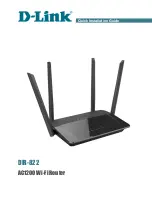
After each frame transmission, all stations on the network contend equally for the next frame transmission.
This competition allows access to the network channel in a fair manner. It also ensures that no single station
can lock out the other stations from accessing the network. Access to the shared channel is determined by the
Media Access Control (MAC) mechanism on each Network Interface Card (NIC) located in each network
node. The MAC address uses a physical address which, in terms of the OSI Reference Model, contains the
lowest level address. This is the address used by a switch. The router at Layer 3 uses a protocol address,
which is referred as a logical address.
CSMA/CD is the tool that allows collisions to be detected. Each collision of frames on the network reduces
the amount of network bandwidth that can be used to send information across the physical wire. CSMA/CD
also forces every device on the network to analyze each individual frame and determine if the device was the
intended recipient of the packet. The process of decoding and analyzing each individual packet generates
additional CPU usage on each machine, which degrades each machine’s performance.
As networks grew in popularity, they also began to grow in size and complexity. For the most part, networks
began as small isolated islands of computers. In many of the early environments, the network was installed
over a weekend—when you came in on Monday, a fat orange cable was threaded throughout the organization,
connecting all the devices. A method of connecting these segments had to be derived. In the next few sections,
we will look at a number of approaches by which networks can be connected. We will look at repeaters, hubs,
bridges, and routers, and demonstrate the benefits and drawbacks to each approach.
Repeaters
The first LANs were designed using thick coaxial cables, with each station physically tapping into the cable.
In order to extend the distance and overcome other limitations on this type of installation, a device known as a
repeater is used. Essentially, a repeater consists of a pair of back−to−back transceivers. The transmit wire on
one transceiver is hooked to the receive wire on the other, so that bits received by one transceiver are
immediately retransmitted by the other.
Repeaters work by regenerating the signals from one segment to another, and they allow networks to
overcome distance limitations and other factors. Repeaters amplify the signal to further transmit it on the
segment because there is a loss in signal energy caused by the length of the cabling. When data travels
through the physical cable it loses strength the further it travels. This loss of the signal strength is referred to
as attenuation.
These devices do not create separate networks; instead, they simply extend an existing one. A standard rule of
thumb is that no more than three repeaters may be located between any two stations. This is often referred to
as the 5−4−3 rule, which states that no more than 5 segments may be attached by no more than 4 repeaters,
with no more than 3 segments populated with workstations. This limitation prevents propagation delay, which
is the time it takes for the packet to go from the beginning of the link to the opposite end.
As you can imagine, in the early LANs this method resulted in a host of performance and fault−isolation
problems. As LANs multiplied, a more structured approach called 10BaseT was introduced. This method
consists of attaching all the devices to a hub in the wiring closet. All stations are connected in a
point−to−point configuration between the interface and the hub.
Hubs
A hub, also known as a concentrator, is a device containing a grouping of repeaters. Similar to repeaters, hubs
are found at the Physical layer of the OSI Model. These devices simply collect and retransmit bits. Hubs are
used to connect multiple cable runs in a star−wired network topology into a single network. This design is
similar to the spokes of a wheel converging on the center of the wheel.
Many benefits derive from this type of setup, such as allowing interdepartmental connections between hubs,
extending the maximum distance between any pair of nodes on the network, and improving the ability to
isolate problems from the rest of the network.
10
















































